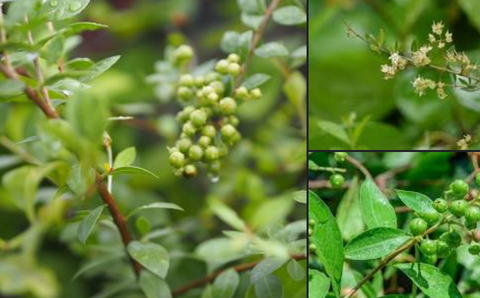INSTANT IMITATION FAKE HENNA
What is Imitation Fake Henna?
Have you heard of Instant Henna, Red Maroon Henna, Black Henna, Quick Dry, Immediate, Emergency Henna?

Not all "henna" is actually safe henna!
Let's talk about the magic of henna! This gentle plant has been used for centuries to give us both therapeutic and cosmetic benefits. But here's the rub: making henna is a time-consuming process, and some companies take shortcuts by adding chemicals - a.k.a. “imitation henna” - to the mix. These sneaky chemical substances have caused some serious health issues like burns, scars, and even organ damage. Yikes!

https://globalnews.ca/news/4187265/shakeel-mehndi-henna-cones-recall-canada/
As professional henna artists, it's our duty to help folks spot the difference between the real deal and fakes, so everyone can enjoy the benefits of safe, genuine henna. Using authentic henna is crucial for maintaining the safety of our skin and hair. It's a natural wonder that gives us a healthy glow and strengthens our strands. But, watch out for those imitation products! They can cause nasty reactions and serious health concerns. So, be smart and only buy from trusted sources. Let's all choose authentic henna and enjoy its magic safely!

So what is henna?
Amidst the arid landscapes of Pakistan, India, North Africa, and the Middle East, a small yet resilient shrub thrives - Henna, or Lawsonia inermis. The leaves of this enchanted tree, much like the berries of blue or the roots of beets, harbor the power to stain your skin. Yet, the essence of henna is unique, for its dye molecule is imbued with a deeper magic, one that allows it to penetrate your skin, creating a spell of body art that lasts for weeks.
For thousands of year, the art of Henna has graced the hands and feet of those who seek to celebrate the magic of life. In cultures such as South Asia and North Africa, intricate designs known as mehndi have adorned the skin of countless souls during weddings and other joyous revelries. Yet, the magic of Henna extends beyond the realm of artistry. For centuries, it has been used to heal the skin, treating conditions that ail the mortal form. And in the sweltering heat of arid lands, it has been woven into lore as a cooling balm for the body and soul.

How is henna made?
In the beauty world, henna paste creation is a magical ritual that involves blending henna powder with lemon juice, sweet nectar, and fragrant essential oils. The brew is left to rest to gain potency, then applied to the skin for temporary tattoos. The longer the ink lingers, the deeper the henna’s magic seeps into the skin, leaving behind a bewitching stain.


What is Imitation Henna?
Authentic henna is a perishable product that necessitates skillful preparation. However, companies seeking to profit from henna have resorted to hazardous shortcuts. Specifically, their "imitation henna" products are composed of industrial dyes and solvents that are shelf-stable. Regrettably, these components are toxic and can cause severe reactions. Despite being illegal, many labeling laws do not mandate the disclosure of these hazardous ingredients.
Many consumers attribute negative reactions to henna, when in fact, the culprit may be other products. It's essential to note that such reactions are not necessarily an allergy but rather a chemical burn.
"No reaction from me, so it's all good!"
"I've used it before, theres no problem!"
"I don't have sensitive skin so its ok!"

False! False! False! That is not true!
Some of the additives that are commonly used include gasoline, kerosene, lighter fluid, paint thinner, benzene, and PPD (p-phenylenediamine or paraphenylenediamine). These chemicals can cause hidden, internal damage to the body. PPD is a prevalent ingredient in hair dyes, but it is typically present in concentrations of less than 3%, and the product instructions warn against allowing it to touch the scalp.
However, PPD found in imitation "henna" products has been discovered in concentrations as high as 10-40%, leading to severe blistering, permanent scarring, organ damage, and even fatalities.
Repeated use of instant chemical henna can sensitize the skin to PPD, making future exposures even more dangerous. Once sensitized, even small amounts of PPD can trigger severe reactions.
To minimize the dangers associated with instant chemical henna, it is essential to avoid using these products altogether and opt for natural henna instead. Natural henna, derived from the plant Lawsonia inermis, is safe and has been used for centuries for medicinal purposes and also temporary body art.
DOWNLOAD PRINTABLE PDF
DOWNLOAD NEWS ARTICLES PDF
News articles
2021 - Australian TV star Tilly Whitfeld says TikTok DIY freckle hack gave her scarring and vision loss
2019 - Twin 11 yr old boys suffer chemical burns after getting “black henna” in Egypt
2018 - 20,000 Imitation henna cones recalled in Canada due to chemical burns caused by phenol additive
2018 - 22 year old man suffers extensive neck and facial swelling following PPD exposure
2017 - 7 year old girl burned and scarred by imitation "henna"
2017 - 22 yr old woman suffers severe burns following exposure to chemical "henna"
2016 - 38 year old woman dies from PPD-tainted henna in Libya, the third death this year
2015 - Woman dies after repeated PPD exposure from chemical "henna" and hair dyes
2015 - 16 year old Mary Bates permanently scarred after PPD exposure from chemical "henna"
2014 - 3 year old boy suffered anaphylactic shock after PPD exposure from chemical "henna"
2011 - 17 year old Tabatha McCourt dies after PPD exposure in hair dye
2011 - Woman hospitalized following PPD exposure in hair dye
Step By Step Henna Aftercare Here
10 Reasons Why you should Learn Henna Art

